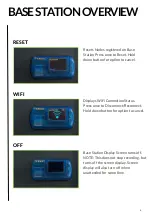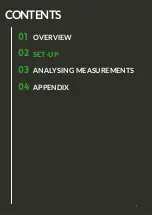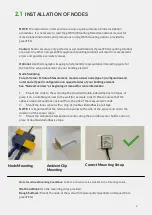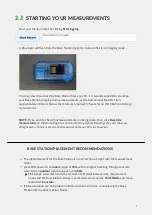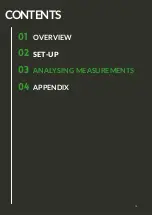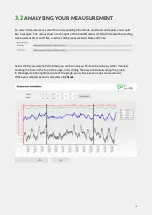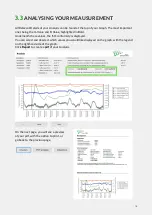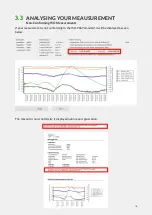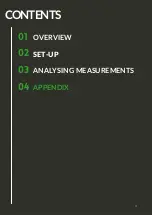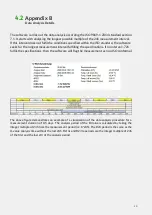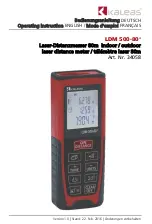
Appendix A
Requirements according ISO 9869-1:2014
4.1
installed close to thermal bridges, cracks or similar sources of error
under direct influence of a heating or of a cooling device or under the draught of a fan
Rain
Snow
Direct solar radiation
Requirements according ISO 9869-1:2014
The standard ISO 9869-1:2014 states in section 6 how a measurement apparatus must be installed for proper
measurement and in section 7 how the measurement data must be analysed.
The ISO standard highlights the following important points for the
installation
:
• Heat flux meters (HFM) and temperature sensors shall be mounted at a location
that is representative
of the whole element (previous inspection using thermography cameras are mentioned).
• HFMs shall not be
• The outer surface of the element should be protected from
• Protection of the outer surface may be achieved through artificial screening.
• Data acquisition intervals should be less than 30min.
The analysis of the measurement data is separated into two methods. The first analysis method (the average
method) is introduced in section 7.1 of the standard. It is the method used in the current software. The
average method is valid if certain conditions are met:
• The heat content of the element is the same at the beginning and at the end of a measurement
(same temperatures and moisture distribution)
• The HFM is not exposed to direct solar radiation.
• False results might be obtained if the external face of the element is exposed to solar radiation
• The thermal conductance of the element is constant during the test
If the above conditions are not met, misleading results can be obtained. It is the responsibility of the user to
ensure that the conditions are met.
Data analysis (average method) for heavier elements with a specific heat per square meter greater than
20kJ/(m2K) according to section 7.1 shall be carried out over a period of integer multiple of 24h.
The measurement shall be ended only when the conditions are fulfilled as follows:
1. Duration of the measurement > 72h
2. R-value obtained at the end of the test does not deviate more than 5% from the value obtained 24h
before (dR24)
3. The R-value obtained during the first 2/3 of the overall measurement period (which needs to be an
integer of 24h, too) does not deviate more than 5% from the values obtained during the last 2/3 of the
overall measurement period (also an integer multiple from 24h).
4. The change in heat stored in the wall is <= 5% of the heat passing through the wall
While test conditions 1 – 3 are validated by greenTEG’s software, the condition 4 is not tested. greenTEG’s
measurement system does not allow measurement of heat storage changes of the wall.
The appendix highlights key elements of the ISO 9869-1:2014 on which the data analysis of the
software is based. Even though the software is capable of analysing the measurement data, it is the
user of the system who has to ensure applicability of the ISO test conditions to measurement data.
The most important aspects for an ISO 9869 compliant U-value measurement are listed. For more
detailed information please refer to the complete ISO 9869 documentation.
18
Summary of Contents for GO MEASUREMENT SYSTEM II
Page 1: ...gOMS II greenTEG GO MEASUREMENT SYSTEM II USER MANUAL...
Page 2: ...CONTENTS I 01 02 03 04 OVERVIEW SET UP ANALYSING MEASUREMENTS APPENDIX...
Page 9: ...01 02 03 04 OVERVIEW SET UP ANALYSING MEASUREMENTS APPENDIX CONTENTS 7...
Page 13: ...CONTENTS 12 01 02 03 04 OVERVIEW SET UP ANALYSING MEASUREMENTS APPENDIX...
Page 18: ...CONTENTS 17 01 02 03 04 OVERVIEW SET UP ANALYSING MEASUREMENTS APPENDIX...
Page 22: ...Appendix C Detailed explanations of the parameters used in the report 4 3 21...




